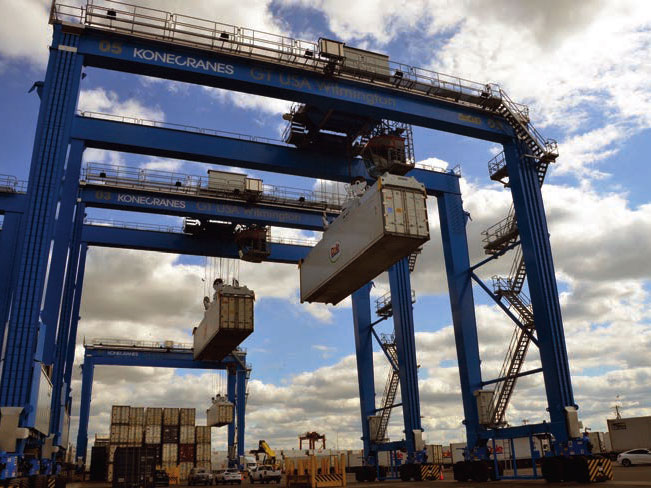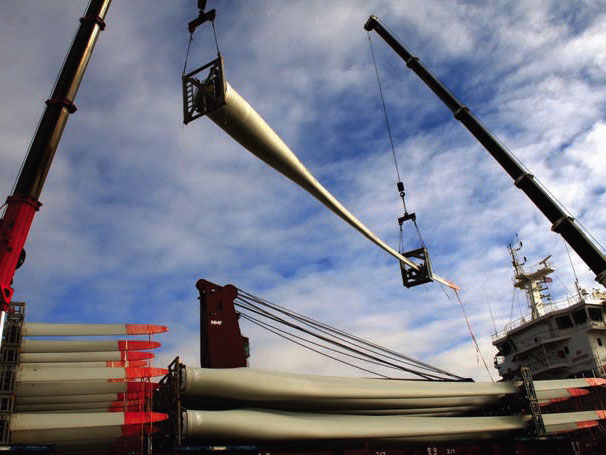
With a newly opened container yard featuring five all-electric rubber-tired gantries, Delaware’s Port of Wilmington is handling a broadening array of cargos at its longtime site at the confluence of the Delaware and Christina rivers while advancing plans for an all-new marine terminal a few miles upriver.
Thanks to efficiencies facilitated by the September completion of the $37 million yard project, the Port of Wilmington – the nation’s longstanding “Top Banana” port – not only is importing more fruit-filled containers, but it also is receiving a widening range of bulk, breakbulk and project shipments.
“The Port of Wilmington has the berth, terminal, and warehouse space, as well as the expertise, to handle additional business,” Joe Cruise, chief executive officer of GT USA Wilmington, told AJOT, adding that the port is not experiencing the congestion and backlogs that are plaguing a number of other U.S. seaports.
“We continue to navigate through the COVID pandemic and the upgrades needed to maximize the potential of this 99-year-old port,” Cruise continued, pointing out that the arm of United Arab Emirates-headquartered Gulftainer already has invested more than $88 million in terminal infrastructure and cargo-handling equipment enhancements since 2018 inking of a 50-year concession agreement with the State of Delaware to manage and operate the Wilmington port.

Meanwhile, Cruise said, GT USA Wilmington is in the final stages of permitting for a brand-new dedicated container terminal at Edgemoor, with hopes to break ground sometime this summer on a 112-acre site – previously home to a Chemours/DuPont titanium dioxide manufacturing plant – about 4 miles up the Delaware River from the port’s current 308-acre installation.
The nearly century-old established facility is presently bustling with not just traditional year-round imports of bananas, juices, and rolled paper but also with seasonal shipments of nearly 6 million cases of Moroccan clementines and 12 million cases of Chilean grapes. Such commodities take advantage of the port’s 1 million square feet of warehouse space, 850,000 square feet of which is refrigerated.
Cruise noted that the Port of Wilmington recently completed and renewed its Safe Quality Food, or SQF, certification, and U.S. Coast Guard security audits “with flying colors,” citing the year-round vigilance of port employees and stakeholders.




